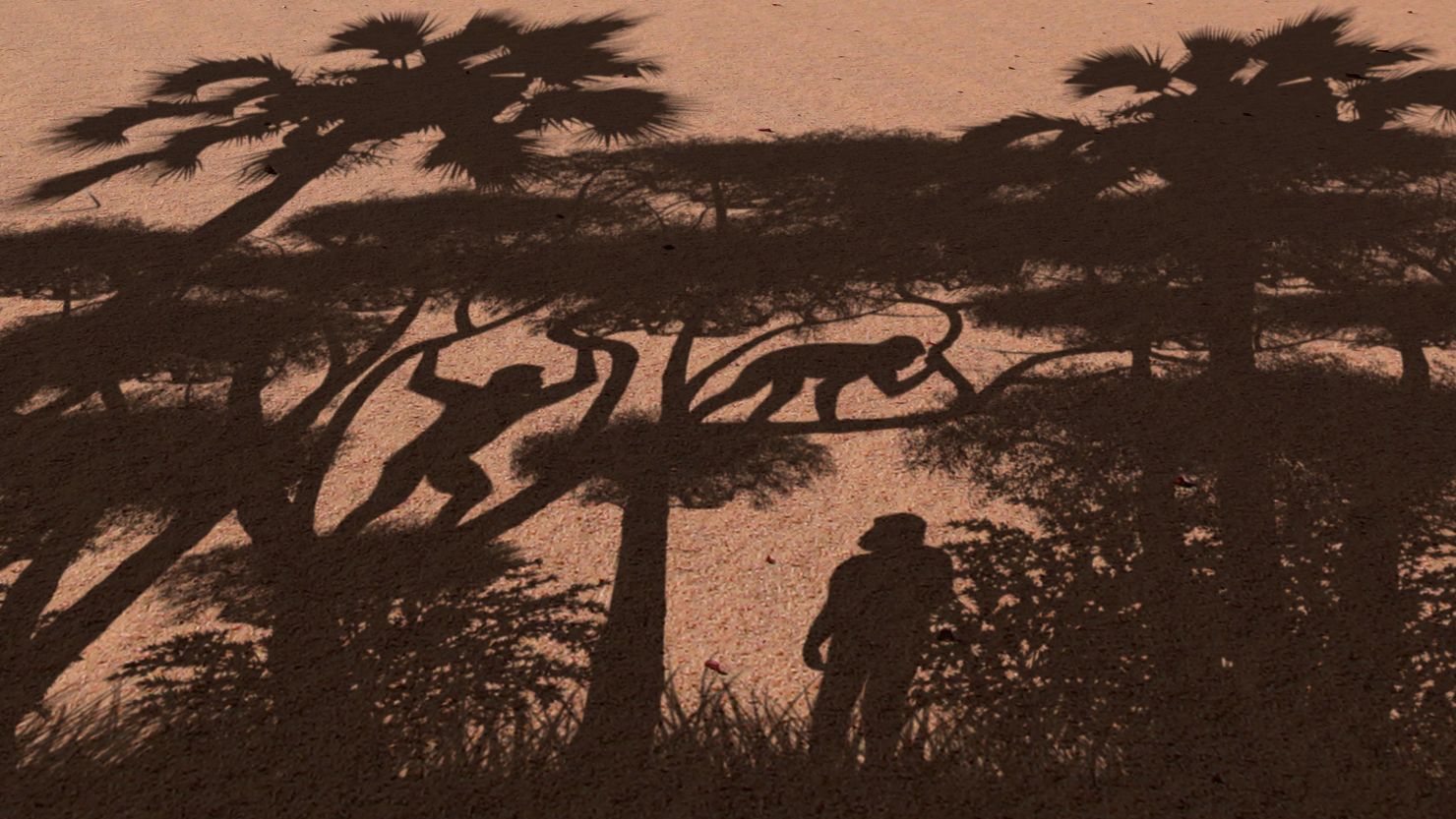Analysis of a femur fossil indicates that a key species could already move somewhat like us
TL;DR
New research on a Sahelanthropus tchadensis fossil reveals that early humans were walking upright around seven million years ago, suggesting that bipedalism emerged far earlier than previously thought. Despite ape-like forearms used for tree-climbing, the femur analysis points to consistent upright walking. The bones analyzed came from a fossil found in Chad’s Djurab desert, named Toumaï, which has become a key piece in understanding human evolution. The debate over whether Sahelanthropus was fully bipedal continues, but recent evidence from femur analysis strongly suggests habitual upright walking.
Don’t forget to join the discussion below!
___________
A fossilized, damaged leg bone from Earth’s ancient past might hold the key to determining when early humans diverged from apes and began their own evolutionary journey.
First discovered two decades ago, this fossil indicates that early humans were walking on two feet as far back as seven million years ago. According to new research published in Nature, this strengthens the argument that Sahelanthropus tchadensis, a species from the time when humans split from chimpanzees, consistently walked upright. Bipedalism is considered a crucial evolutionary step that set the human lineage apart from apes, and Sahelanthropus could be the oldest known hominin, a group that includes modern humans, extinct species, and all their direct ancestors.
This species could potentially be our earliest non-ape ancestor if its lineage led to modern humans rather than becoming extinct. While its leg bones suggest it regularly walked upright, Sahelanthropus’s chimp-like forearms indicate it still spent significant time in trees. Two arm bones show that the species used a grasping technique for climbing, suggesting a mixed lifestyle that might have lasted among early hominins for about three million years.
Because it lived during the period when humans and apes split into separate evolutionary paths, Sahelanthropus tchadensis remains significant, regardless of where it falls on the family tree. The only fossils found, uncovered at the Toros-Menalla site in Chad’s Djurab desert, include a skull, jaw, and teeth. This specimen, nicknamed Toumaï, meaning “hope of life” in the local language, was first classified as a new species in 2002.
“In many ways, it looks like an ape,” says Daniel Lieberman, a Harvard University paleoanthropologist not involved in the recent study. The species had a smaller brain than a chimpanzee and a long, ape-like skull with a pronounced brow. “But there are some important traits that suggest it was on the human evolutionary path. The most crucial is that it appears to have been a biped,” Lieberman adds, who is an expert in human physical evolution. Previous studies of the skull provided evidence of bipedalism, showing that the opening for the spinal cord in the skull faces downward, similar to modern humans and other bipedal creatures, unlike quadrupeds, where it faces backward due to a more horizontal neck posture.
However, some experts have disagreed on whether the skull alone is enough to confirm bipedalism in Sahelanthropus. Scientists took nearly two decades to thoroughly examine other bones that might offer more clues, particularly the femur.
Initially, the femur and two forearm bones found near the skull were not linked to Sahelanthropus. Although there is no certainty that these bones belonged to the same individual as the skull, no other large primates were discovered at the site, so the bones have been attributed to the species.
Analyzing the femur posed challenges since both ends of the bone, which hold essential clues for determining bipedalism, were missing. The upper part of the femur would show whether it was designed to support the body’s weight on one leg at a time, while the lower part near the knee would reveal if the bone alignment helped balance the body’s weight—a crucial factor for habitual upright walking.
“It was difficult, especially since a porcupine had likely gnawed on the bone,” says co-author Jean-Renaud Boisserie from the Université de Poitiers. “Yet, we were able to gather valuable information from the external shape and internal structure using micro CT scans.”
Boisserie and his colleagues, some of whom were part of the original team that classified Sahelanthropus in 2002, compared more than 20 traits of the femur and forearm bones with a range of living species, including chimpanzees, gorillas, orangutans, and fossilized apes from the Miocene era. They also looked at early human bipeds like Orrorin tugenensis and Ardipithecus ramidus, as well as fossils from the genus Homo, including prehistoric and modern humans. By comparing external shapes, curves, internal structures, and thickness, they determined that the femur of S. tchadensis shared many similarities with other hominins, while none of its features were exclusive to apes. “Based on our analysis, the most straightforward explanation is that the similarities between Sahelanthropus and other hominins reflect both their shared evolutionary history and similar adaptations for upright walking,” says Boisserie.
“I think the researchers did everything possible to figure out whether Sahelanthropus was a biped. They present a convincing case based on difficult-to-interpret anatomy,” says Daniel Lieberman. “Is it definitive proof? No. But when combined with the skull evidence, it should settle the debate about whether this species walked upright.”

Despite this, the debate will likely continue. Just two years ago, a study in the Journal of Human Evolution argued that the same femur did not belong to a habitual biped. The new analysis contradicts that study. John Hawks, a University of Wisconsin–Madison researcher who wasn’t involved in either femur study, questions whether the skull and teeth of Sahelanthropus are enough to classify it as a bipedal hominin. He finds the disagreement between femur analyses frustrating, especially since the fossil was discovered two decades ago. “Both teams are looking at the same bone, yet they completely disagree. If they would release the 3D and internal scan data for public examination, there shouldn’t be any reason for this conflict,” he says.
If Sahelanthropus indeed walked upright, its arm bones suggest it also spent significant time in trees. The analysis of the ulnae, the larger bone in the forearm, indicates that the species’ arms were very ape-like, similar to those of modern chimps. This suggests that Sahelanthropus was still highly skilled in climbing trees.
Boisserie suggests that this hybrid lifestyle of bipedalism and tree-climbing was likely useful in the diverse environment of northern Chad, which consisted of forests, palm groves, and grassy areas about seven million years ago. “The varied landscape provided Sahelanthropus tchadensis with access to resources from both arboreal and terrestrial environments, as well as aquatic habitats,” Boisserie explains.
“I love the analysis of the ulnae, which shows that Sahelanthropus also regularly climbed trees,” adds Rick Potts, director of the Smithsonian’s Human Origins Program. He notes that this evidence indicates early hominins may have been adapted for both upright walking and tree-climbing for nearly four million years, from Sahelanthropus to Australopithecus afarensis, which showed similar adaptations until around three million years ago.
Of course, the debate over bipedalism is only part of the bigger question: Is Sahelanthropus truly the oldest known member of the human lineage?
Some scientists doubt that Sahelanthropus is a hominin at all. Because it lived so close to the time when humans and chimps diverged, researchers debate whether it existed after the split or just before it. If it lived before the divergence, Sahelanthropus might be an ancestor of both humans and chimps, a common ancestor, or a close relative that isn’t directly related to either.
Rick Potts suggests that two-legged walking might have evolved independently multiple times, leading to similar leg bone adaptations in different species. So, ancient bipedal walkers may have existed that are not direct ancestors of modern humans.
However, Sahelanthropus seems to show two key traits shared by all later hominins but not by chimpanzees: a femur adapted for upright walking and reduced canine teeth, which altered the mouth’s structure. Other early hominin fossils, such as Orrorin tugenensis and Ardipithecus ramidus, also share these traits.
“So, what are the chances that African fossil apes from 7 to 4.4 million years ago, which exhibit both these traits, are not hominins?” Potts asks. “The researchers argue that the simplest explanation is that all three species are hominins. And since Sahelanthropus is the oldest, it may be the closest we’ll get to the evolutionary split that led to humans.”




